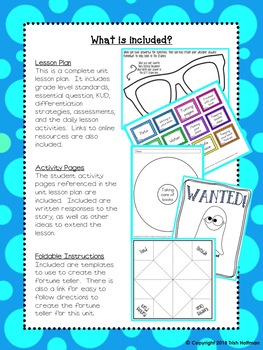Library Skills: Never Let A Ghost Borrow Your Library Book
- Zip
What educators are saying
Description
Never Let a Ghost Borrow Your Library Book
This newly revised product is based on the book, Never Let a Ghost Borrow Your Library Book by Karen Casale and is designed to teach and/or remind your students of the importance of taking good care of their books whether they are personal, school, or library books. It includes activities for students to reflect on what they already know about book care, and strengthen their understanding of the concept.
Created as a unit, students will listen to the featured title and respond to the story in various ways. They will share their favorite part of the story as well as respond to the guidelines presented in the book. A crossword puzzle and additional activities allow students to reflect on the “very official guidelines” from the story and respond to them in creative ways. Using a foldable that students already love to use, they will create a book care fortune teller to demonstrate their learning. Since the main characters are “Library Secret Service Agents,” there had to be some sunglasses activities too!! Kids love to wear their shades! Finally, there is an optional “I Have, Who Has” group game to test their knowledge and skill.
I hope this unit is a great match for you and your students!
*****************************************************************************
Comprehensive Lesson Plan Included!
This product includes a complete lesson plan listing the covered standards, lesson objectives, daily lesson plan, assessments and evaluations, differentiated instruction strategies, and correlations to inquiry based learning. Truly, all you have to do is download, print, put in your plan book and teach.
*****************************************************************************
Customer Tips:
How to get TPT credit to use on future purchases:
• Please go to your My Purchases page (you may need to login). Beside each purchase you'll see a Provide Feedback button. Simply click it and you will be taken to a page where you can give a quick rating and leave a short comment for the product. Each time you give feedback, TPT gives you feedback credits that you use to lower the cost of your future purchases. I value your feedback greatly as it helps me determine which products are most valuable for your classroom so I can create more for you. ☺
Be the first to know about my new discounts, freebies and product launches:
• Look for the green star next to my store logo and click it to become a follower. Voila! You will now receive email updates about this store. ☺
*****************************************************************************



